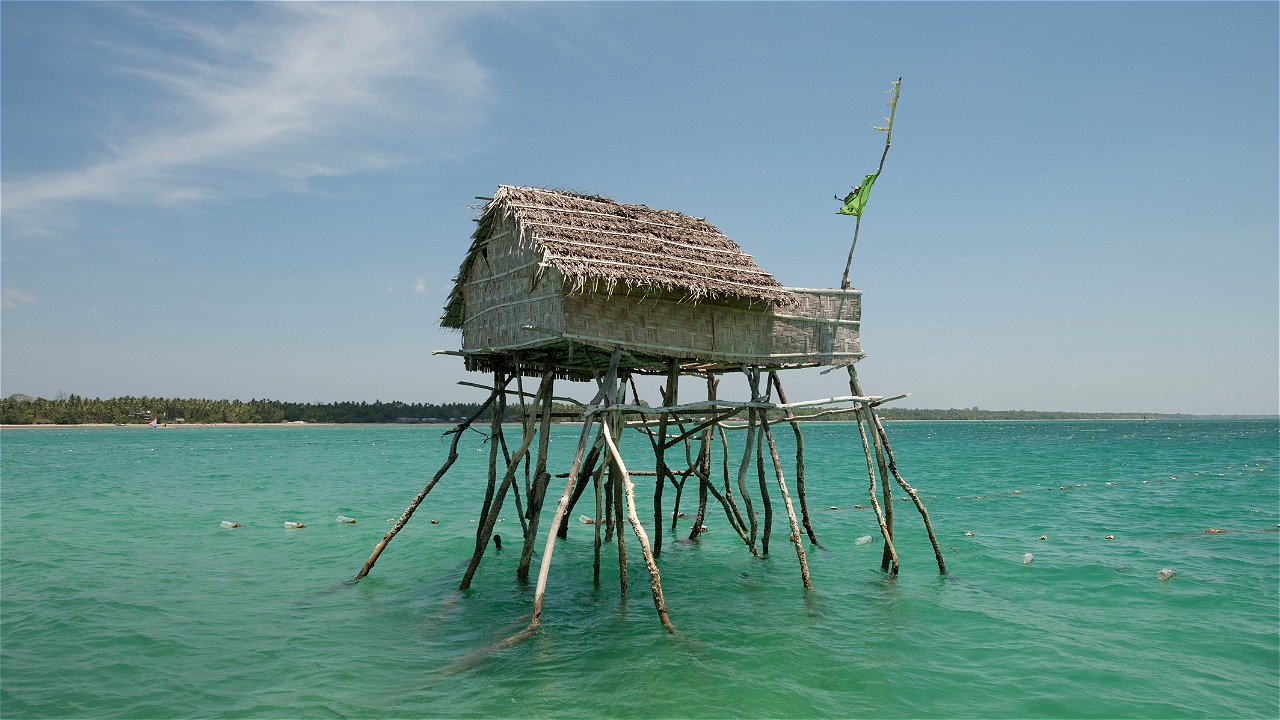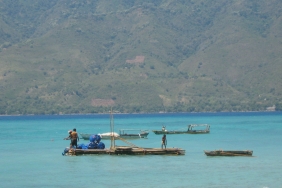JUKU EJAYA BULUKUMBA FARMER GROUP'S EXPERIENCE USING FERTILIZER: A QUESTION MARK
Late 2013, I visited Bulukumba, South Sulawesi. Our goal at that time, in addition to monitoring the development of cottoni seaweed cultivation, was also to gather information about the use of Green Natural Fertilizer, which that year began to be used by Bulukumba seaweed farmers.
Green Natural Fertilizer is a fertilizer produced to increase seaweed growth and overcome seaweed diseases such as ice-ice. The fertilizer, which is claimed to be derived from natural ingredients and has no adverse impact on the environment, has been introduced in Bulukumba Regency, South Sulawesi Province since 2013. In addition, it is also available in East Lombok, West Nusa Tenggara (NTB), and has been researched for its effectiveness by academics from Mataram University.
However, it is feared that the use of this fertilizer could have a negative impact on the marine environment. Because, after looking at the permit letter, the liquid natural organic fertilizer "Alam Hijau" produced by PT. Disantya Prestasi Tangerang Banten only received a permit from the Ministry of Agriculture of the Republic of Indonesia in 2011 with a quality and effectiveness test on spinach plants, not for seaweed.
In addition, there is a fear that this fertilizer can cause water fertility or eutrophication so that waters experience a lack of oxygen and threaten the life of organisms in it. This has been experienced by seaweed in Kojadoi Village, Sikka District, East Nusa Tenggara, which was once victorious and eventually plummeted due to eutrophication since 2007. The cause of the damage to the aquatic ecosystem allegedly came from the use of liquid fertilizer branded Green Tonic, which triggered an abundance of nitrogen in the waters.
Here are the results of our investigation in Bulukumba at the end of 2013.
***
According to A. Hidayatullah Ahmad, Public Relations Officer of Bulukumba Local Government, Alam Hijau Fertilizer could exist in Bulukumba thanks to the initiative of Syamsuddin, Vice Regent of Bulukumba, who saw the development of seaweed in Dompu, West Nusa Tenggara (NTB) due to the application of Alam Hijau Fertilizer. He invited representatives of green nature to apply the fertilizer to Bulukumba.
Syamsuddin was also the one who directed Mr. Jokowiyanto, the green nature leader of Bulukumba, in May 2013 to the Juku Ejaya Farmer Group, Tanah Beru village, Bonto Bahari sub-district. A seaweed farming area that is well known as a village of excellence. It was to Tanah Beru Village that we went, to inquire more about the use of fertilizer at the Juku Ejaya Farmers Group.
The head of the Juku Ejaya Farmer Group, Subair, told us that the first trial of Green Natural Fertilizer used 15 stretches of seedlings that were juxtaposed with seedlings without Green Natural Fertilizer. The trial, according to Subair, succeeded in convincing the seaweed farmers. Moreover, before the trial, the seaweed industry in Tanah Beru Village was experiencing a bleak period. For three years, the quality of seaweed production declined due to exposure to ice-ice, moss, and easily broken thalus.
Uniquely, to convince farmers of the organic standard of the fertilizer, Jokowiyanto had to swallow the fertilizer in front of them. His attraction erased farmers' doubts about the fertilizer's effect on skin health. Because of other fertilizers (before green nature), farmers experienced itching on the skin. But now, hundreds of farmers in Tanah Beru Village have applied green nature, with an average of two to three cycles.
The positive impact they can feel is an increase in production weight, more seaweed branches, more shiny and clean, resistant to being hit by waves, not overgrown with moss and not infected with ice-ice. Subair told us his story with such enthusiasm, we were thrilled by him.
However, when I asked about the content of the liquid fertilizer, which is sold at retail for one liter bottle of about Rp110,000, to the leader over the phone, Mr. Jokowiyanto, could only answer that it was a company secret, in accordance with IPR. He admitted that the ingredients are organic, but the indication of organic is not yet known.
I then asked again, has there been a researcher who examined the content of the fertilizer? He only said, it has been researched by Mataram University Lecturers and liquid fertilizer samples have been sent to the Gorontalo Seaweed Research and Development Center.
A big question, why Mr. Joko does not want to reveal the content in the liquid fertilizer? Is there a code of ethics in hiding the content and basic ingredients of fertilizer for farmers and the general public? Is it protected by IPR? Then, how is the remaining fertilizer soaking water (in the tarpaulin pool) disposed of? What is the effect on the soil or water after the disposal of the remaining fertilizer?
In the house and kiosk of the head of the farmer group, Subair, there was plenty of Green Natural Fertilizer available. Yes, he is the main distributor of the fertilizer for the Tanah Beru area. According to Subair, many people outside Bulukumba have come there to buy fertilizer and take it outside Bulukumba.
***
In early 2015 when I visited again, Mr. Subair and the Juku Ejaya Farmer Group were still using the fertilizer. This means that the use of fertilizer has been going on for more than a year. In fact, Mr. Sulkap S. Latief, Head of the South Sulawesi Cultivation Division, officially banned the use of the fertilizer, because the fertilizer did not obtain a permit from the Ministry of Marine Affairs and Fisheries (DKP). I heard this in May 2014, during the discussion of the Minapolitan Coordinating Body of Pinrang Regency.
Facing a series of question marks in my mind, the spirit of Subair and Jokowiyanto, as well as the ban, then, what will we do about this green fertilizer in the future?
It seems that further research is still needed to determine whether or not it is safe to use this Green Natural Fertilizer specifically for seaweed cultivation. Because if it is used in water, the impact can be very high compared to land on land.
Author: Idham Malik (Aquaculture Fisheries Officer WWF-Indonesia)





